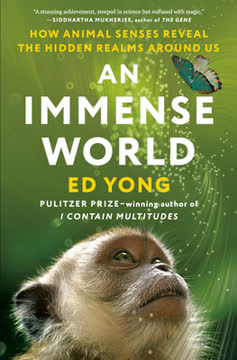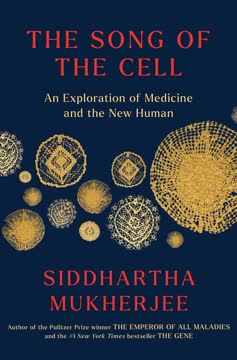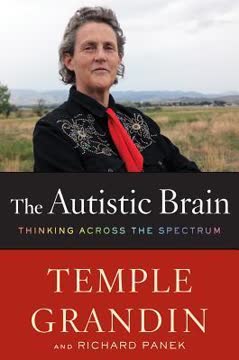重点摘要
1. 视觉思维是一种独特且有价值的认知方式
“视觉思维不是关于我们如何看见,而是关于大脑如何处理信息;我们如何思考和感知。”
两种类型的视觉思维者。 物体视觉化者以照片般逼真的图像思考,擅长艺术、设计和机械工程等领域。空间视觉化者以模式和抽象思考,在数学和物理等领域表现出色。这两种视觉思维对于创新和解决问题都是必不可少的。
视觉思维的特点:
- 联想思维:在看似无关的概念之间建立联系
- 注重细节:注意到小的差异或潜在问题
- 模拟场景的能力:可视化潜在的结果或解决方案
视觉思维不仅限于人类,许多动物也通过视觉处理信息,这影响了它们的行为和生存策略。
2. 教育系统往往未能识别和培养视觉思维者
“在我看来,从学校中移除动手学习是近年来教育中发生的最糟糕的事情。”
标准化测试的偏见。 当前的教育系统严重偏向于语言和数学技能,往往忽视了视觉思维者的优势。这种方法可能导致有才华的个人被贴上表现不佳或有学习障碍的标签,而实际上他们的认知方式只是与常规不同。
忽视视觉思维者的后果:
- 潜在的创新者和问题解决者的流失
- 各个领域中思维方式的多样性减少
- 视觉思维者的动机和自尊心下降
为了解决这个问题,学校应更多地融入动手学习体验、视觉辅助和基于项目的评估,让视觉思维者展示他们独特的能力和贡献。
3. 视觉思维者对于创新和解决问题至关重要
“我们需要能够建设和修复基础设施、改革能源和农业、创造应对气候变化和流行病工具、开发机器人和人工智能的未来一代。”
现实应用。 视觉思维者在历史上负责了许多突破性的发明和解决方案。他们从不同角度看待问题并可视化复杂系统的能力使他们在工程、设计和技术等领域无价。
视觉思维者的贡献示例:
- 创新技术的发展(如计算机、智能手机)
- 建筑和基础设施设计
- 医学突破和科学发现
识别和培养视觉思维技能对于应对复杂的全球挑战和推动各行业的进步至关重要。
4. 互补的思维:多样化思维方式的力量
“成功合作的第一步是了解不同类型的思维者存在。”
协同合作。 当视觉思维者和语言思维者一起工作时,他们可以通过结合各自的独特优势取得显著成果。这种互补的方法导致更全面的问题解决和创新解决方案。
团队中多样化思维方式的好处:
- 增强的创造力和创新
- 改善的问题解决能力
- 更全面的分析和决策
组织应积极寻求创建包括视觉和语言思维者在内的多样化团队,以最大化其成功和突破性想法的潜力。
5. 神经多样性、视觉思维与天才之间的联系
“天才不仅需要智力和创造力,还需要发散性思维。”
神经多样性和创造力。 历史上许多被认为是天才的人表现出与神经多样性相关的特征,如自闭症或多动症。这些特征通常与强烈的视觉思维能力和非传统的问题解决方法相关。
神经多样性天才的特点:
- 对特定兴趣的高度专注
- 看到别人可能错过的模式和联系的能力
- 非传统的思维和解决问题的方法
接受神经多样性并认识到不同认知方式的价值可以在各个领域带来突破性的发现和创新。
6. 视觉思维在风险评估和灾害预防中的作用
“视觉思维不能让我预测未来。但它确实让我能够专注于设计缺陷和系统故障,这些问题如果不解决,可能导致灾难。”
预见潜在问题。 视觉思维者擅长识别潜在风险并可视化可能的故障场景。这种能力在工程、航空和灾害预防等领域至关重要。
视觉思维在风险评估中的应用:
- 识别复杂系统中的设计缺陷
- 模拟潜在的灾难场景
- 开发创新的安全措施
将视觉思维者纳入风险评估和安全规划过程可以显著增强组织预防和减轻潜在灾难的能力。
7. 通过视觉思维理解动物认知
“动物生活在一个基于感官的世界中,并通过图像、气味、声音和触觉进行思考。”
认知的相似性。 许多动物通过视觉处理信息,类似于人类的视觉思维者。理解这一点可以提供对动物行为、学习和解决问题能力的见解。
动物视觉思维的影响:
- 增强对动物认知和行为的理解
- 改进动物福利实践
- 在人类与动物互动和训练中的潜在应用
通过视觉思维的视角研究动物认知可以带来更有效和人道的动物护理、训练和保护方法。
最后更新日期:
FAQ
What's Visual Thinking: The Hidden Gifts of People Who Think in Pictures, Patterns, and Abstractions about?
- Exploration of Thinking Styles: The book delves into how individuals process information, focusing on those who think in images and patterns rather than words.
- Neurodiversity and Innovation: It discusses the intersection of neurodiversity and genius, highlighting contributions of visual thinkers to innovation and problem-solving.
- Personal Journey: Temple Grandin shares her experiences as an autistic individual, illustrating how visual thinking has shaped her career in animal science and design.
Why should I read Visual Thinking by Temple Grandin?
- Understanding Different Minds: Gain insights into diverse cognitive styles, enhancing empathy and understanding in educational and professional settings.
- Valuable for Educators and Employers: Offers practical advice on identifying and nurturing visual thinkers, ensuring their skills are recognized and utilized.
- Inspiration for Neurodiverse Individuals: Grandin’s journey serves as an inspiration, showing that different thinking styles can lead to success and innovation.
What are the key takeaways of Visual Thinking?
- Types of Visual Thinkers: Grandin identifies object visualizers and spatial visualizers, each excelling in different fields.
- Impact of Education: Critiques standardized education systems that often overlook visual thinkers, advocating for hands-on learning.
- Collaboration is Key: Emphasizes the importance of collaboration between verbal and visual thinkers for innovative solutions.
What are the best quotes from Visual Thinking and what do they mean?
- “We come into the world without words.”: Highlights the innate ability to perceive the world through senses before language develops.
- “We’ve screened out visual thinkers.”: Critiques the educational system's failure to nurture visual thinkers, leading to a loss of potential talent.
- “Two geeks are better than one.”: Underscores the value of collaboration between different types of thinkers for enhanced creativity and problem-solving.
How does Temple Grandin define visual thinking in her book?
- Cognitive Process: Visual thinking is defined as processing information primarily through images and visual patterns rather than words.
- Problem-Solving Importance: Crucial for fields like engineering and design, where understanding spatial relationships is essential.
- Spectrum of Thinking: Visual thinking exists on a spectrum, with most people using a combination of visual and verbal thinking.
How does Visual Thinking address education for visual thinkers?
- Critique of Standardized Testing: Critiques reliance on standardized testing, which disadvantages visual thinkers who excel in hands-on learning.
- Advocacy for Hands-On Learning: Advocates for reinstating hands-on classes like shop and art to help visual thinkers develop their talents.
- Individualized Education Plans (IEPs): Emphasizes creating tailored educational experiences that cater to visual thinkers' strengths.
What role does neurodiversity play in Visual Thinking?
- Celebration of Differences: Emphasizes recognizing neurodiversity as a strength, contributing to creativity and innovation.
- Advocacy for Inclusion: Advocates for inclusive practices in education and the workplace to allow neurodiverse individuals to thrive.
- Connection to Genius: Explores the link between neurodiversity and genius, suggesting many great innovators exhibited traits associated with autism.
How can employers benefit from understanding visual thinking according to Temple Grandin?
- Identifying Talent: Learn to recognize visual thinkers and leverage their unique skills for problem-solving and innovation.
- Creating Inclusive Work Environments: Provides strategies for accommodating different thinking styles, improving collaboration and productivity.
- Valuing Diverse Perspectives: Argues that diverse teams, including verbal and visual thinkers, are more effective at tackling complex problems.
What solutions does Visual Thinking propose for the skills gap in the workforce?
- Reinstating Vocational Training: Advocates for vocational training and hands-on learning opportunities to cultivate visual thinkers' skills.
- Promoting Apprenticeships: Emphasizes the importance of apprenticeship programs for real-world experience and training.
- Encouraging Early Exposure: Suggests exposing children to hands-on activities and careers to help them discover their strengths.
How does Grandin’s personal experience shape Visual Thinking?
- Autistic Perspective: Shares her journey as an autistic individual, illustrating how visual thinking has been both a challenge and a strength.
- Professional Insights: Provides real-world examples from her career in livestock industry and design, showing visual thinking's impact.
- Empowerment for Others: Aims to empower others on the autism spectrum to recognize and embrace their unique thinking styles.
What examples does Grandin provide to illustrate visual thinking in action?
- NASA and Engineering: Highlights how visual thinkers can identify potential risks in engineering designs, using her experiences with NASA.
- Animal Handling: Describes how visualizing animal behavior led to improved welfare practices in her work.
- Everyday Risks: Discusses scenarios where visual thinking helps identify risks, demonstrating practical applications in daily life.
What is the significance of visual thinking in the context of innovation and creativity?
- Fostering Innovation: Visual thinking allows individuals to see connections and possibilities others may miss, leading to groundbreaking ideas.
- Historical Examples: References figures like Einstein and Michelangelo, suggesting their visual thinking contributed to their achievements.
- Encouraging Diverse Perspectives: Emphasizes the importance of diverse perspectives in creative fields, enhancing collaboration and innovation.
评论
《视觉思维》评价褒贬不一。一些人赞扬格兰丁对不同思维方式的见解以及对教育改革的需求。另一些人则批评她的泛化、缺乏研究和内容重复。该书的优点在于讨论了视觉思维及其潜在的好处,而缺点则包括对视觉思维者的偏见和过度依赖轶事。许多读者欣赏格兰丁的观点,但认为执行力不足。该书引发了关于神经多样性和教育的讨论,但在提供全面、基于证据的论点方面有所欠缺。
Similar Books


















